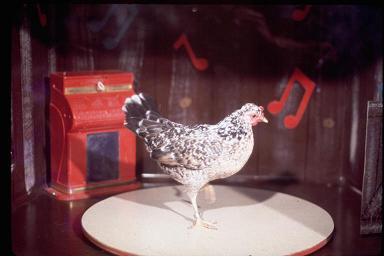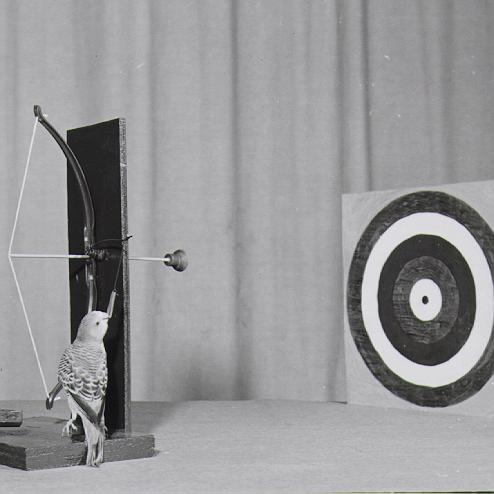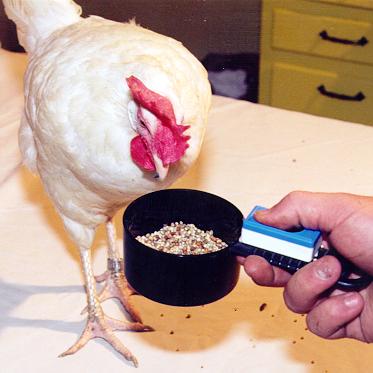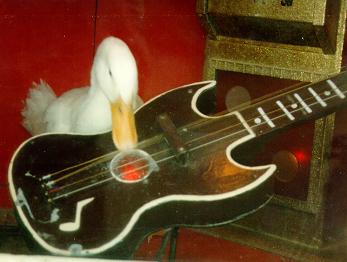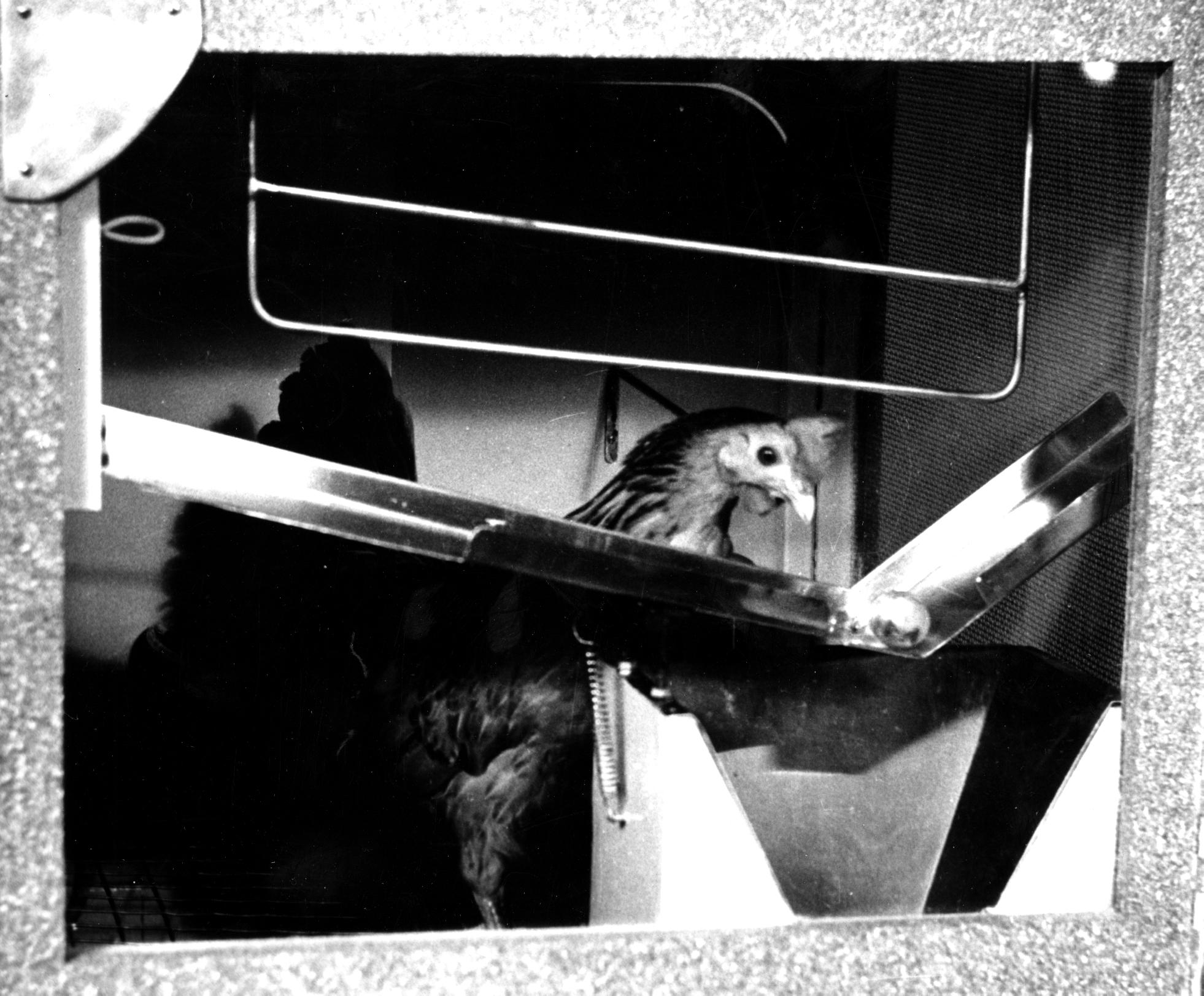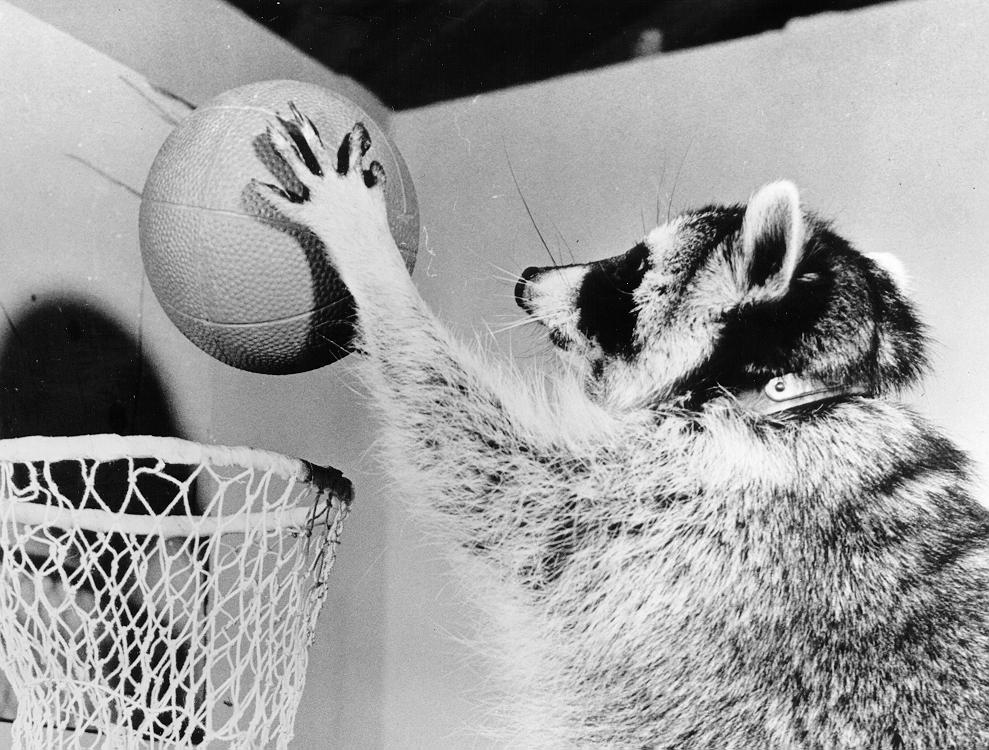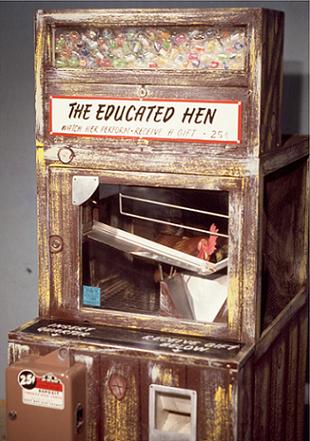|
Basic Concepts |
|
|
Learning Activities (Click on hyperlink for worksheet
activities.) |
|
|
1.
Definitions 2.
Identify concepts from animal acts. (Refer to: Tina the
Truck-Driving Chicken and Casey the Baseball Playing Chicken.) 5. Word search |
|
|
|
|
|
Click on the thumbnail below to
enlarge. |
|
|
|
|
|
|
|
|
Behavior
is any activity that an animal is performing at a given moment -
"whatever the animal is doing." At the IQ-Zoo and in the
projects developed by ABE, Inc., some of the behaviors performed by animals
included pecking, pulling, and picking up and moving objects. The type of
behavior that was of most interest to the folks at the IQ Zoo and ABE was
operant behavior. Operant behavior operates upon the environment and
changes it. It is also a type of behavior that is a function of its
consequences - for example, it can be reinforced. By guiding an animal’s behavior, it is
possible to create the impression that the animal is doing just about
anything that you want it to. The crew
at IQ Zoo could create the impression that chickens danced, that ducks played
guitar, and that rabbits and cats played the piano. The
exhibits in these pages capitalize upon animals' naturally occurring
behaviors. For example, chickens often scratch the ground, peck at
objects, and pull on objects. It is an easy matter to train the animals
so that they will perform these types of behaviors in human-appearing
situations. For example, in the Dancing Chicken exhibit, the chicken is
taught to scratch on a round dance-platform to the sound of juke-box
music. In this case, the chicken appears to be dancing. In the
Postcard Vending Chicken, the chicken simply pulls a loop, and then the
exhibit automatically delivers a postcard to the customer. In Bird-Brain
(the tic-tac-toe playing chicken), the chicken is merely pecking at a disk
every time the disk lights up. In Bird Brain, the chicken may appear to
be playing tic-tac-toe, but it is merely pecking at a disk. |
|
|
Click on the thumbnail below to
enlarge. |
Stimulus |
A
stimulus is an aspect of the environment (either external or internal to the
organism) that that has the potential to control the behavior of the animal. The
plural of stimulus is "stimuli." Often, the term “stimulus” refers
to a change in the environment, such as a light coming on or the occurrence
of a sound. In operant conditioning, a stimulus can occur before the behavior
(making it a discriminative stimulus) or after the behavior (e.g., as a
reinforcer). In this photo, the parakeet has been trained to pull on the
small lever in the presence of the bulls-eye target. After the lever is
pulled, food is delivered. |
|
|
|
|
|
Reinforcer |
|
|
A reinforcer is an event that follows a behavior and that increases
the likelihood of that behavior occurring again. You might think of it as a
“reward,” or a “positive stimulus.”
However, the technical term is “reinforcer.” The reinforcer in
the cup at the left is grain. For example, a parrot was trained to pedal a
bicycle across a tightrope. Crossing the tightrope was reinforced with
grain. This increased the probability that the parrot would pedal across the
tightrope in the future. With dolphins, it is possible to reinforce jumping
through a hoop by delivering a fish after the hoop-jump. To teach a
rabbit to play the piano, every time the rabbit "paws" at the keys,
the trainer delivers food, and the rabbit is more likely to paw at the keys
in the future. |
|
|
|
|
|
Reinforcement |
|
|
Reinforcement" is
the process of delivering a reinforcer after the desired behavior. It is
used to guide animal behavior toward a specific goal and to increase the
frequency of that behavior. The process of strengthening a behavior by
either presenting something rewarding or removing something unpleasant is
reinforcement. The specific types of reinforcement (positive and
negative) are described later in these web pages. |
|
|
|
|
|
Click
on the thumbnail below to enlarge. |
Operant |
|
The word operant has several meanings in the world of
conditioning. It can refer to the class of behaviors that an organism
exhibits that acts on the environment in some way (e.g., pecking) or it can
refer to the entire trio of stimulus, behavior, and reinforcer (sometimes
called the "three-term contingency"). In the case of this
guitar-playing duck, the word “operant” can refer to the behavior of playing
the guitar or to the three-term contingency of guitar (stimulus), plucking
the strings (behavior), and food (reinforcer). |
|
|
|
|
|
Contingencies |
|
|
Contingencies are the specific environmental conditions
involved with reinforcing behavior. For instance, the pecking behavior for a
chicken might be reinforced with food only when a green light flashes, but at
no other time. The three-term contingency of the operant in this case
would be: The three-term contingency
for the basketball-playing raccoon would be:
Net and ball + dunk ball in net --> food
|
|
|
|
|
|
Deprivation |
|
|
Deprivation is the process of making a reinforcer more
reinforcing by withholding it. To make food a reinforcer, you must first
deprive the animal of food for a while. The Brelands found that, in most
cases, it was only necessary to deprive the animal of food a few hours before
performance time. The
dolphin at the left was trained during regular feeding time. Because the
dolphin had been deprived of food (fish) for a few hours, the fish acted as a
reinforcer. |
|
|
|
|
|
Skinner Box |
|
|
The
Skinner Box (operant chamber) was an enclosed space that B. F. Skinner used
to study operant behavior. It was an apparatus that usually involved, for
instance, a light, a lever, and a food dispenser, all of which served as the
set-up for the stimulus, behavior, and reinforcer. (In actuality, Skinner
preferred to call these boxes “experimental chambers.”) Many of the exhibits
at the I.Q. Zoo were “fancy Skinner boxes.” Here we see the Educated Hen
exhibit (also called the capsule-vending chicken.) The box has been made
to look like a toy dispenser. When the customer deposits a quarter in
the slot, a plastic capsule with a toy rolls down the shute. When the
capsule falls to the lowest part of the shoot, this serves as the stimulus
for the chicken's pecking at the capsule. When the chicken pecks at the
capsule, it rolls off the shoot, down the funnel, and into the hands of the
customer. This chain of behaviors is reinforced with food. |
|
